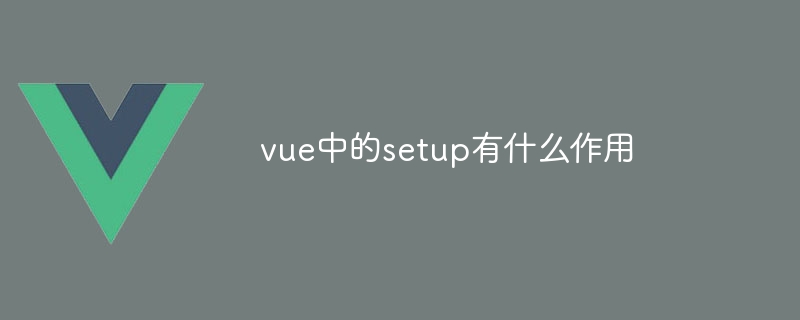
The setup function in Vue is used to initialize component state and logic, including defining responsive data, methods and life cycle hooks. Replaces data(), methods(), computed(), and watch() options in the options API. Provide better performance through responsive handling. Supports Composition API for sharing and reusing logic. Improves testability because logic is separated from template code.

The role of setup in Vue
The setup function introduced in Vue.js 3 is a hook function. Called during the component's life cycle to initialize the component. It mainly has the following functions:
1. Initialize component status and logic
In the setup function, you can define the component’s status (i.e. responsive data) and methods, and lifecycle hooks. These states and logic will be used throughout the component lifecycle.
2. Replace options API
#setup function can replace data(), methods(), computed() and watch in options API in Vue.js 2 () and other options. It provides a more unified and concise way to define component logic.
3. Provide better performance
The responsive processing of the setup function is more efficient than the options API because it only calculates the changed parts, thus improving performance.
4. Support for Composition API
The setup function allows the use of the Composition API, a new way to share and reuse logic between components. This can be achieved by using the provide() and inject() functions.
5. High testability
The logic in the setup function is separated from the template code, making it easier to test. Tests can only target the logic defined in the setup function without interacting with the template.
Example
<code class="javascript">import { ref } from 'vue';
export default {
setup() {
const count = ref(0);
const increment = () => count.value++;
return {
count,
increment,
};
},
};</code>In this example, the setup function defines the component's state (count) and method (increment), which will be in the component template use.
The above is the detailed content of What is the function of setup in vue. For more information, please follow other related articles on the PHP Chinese website!